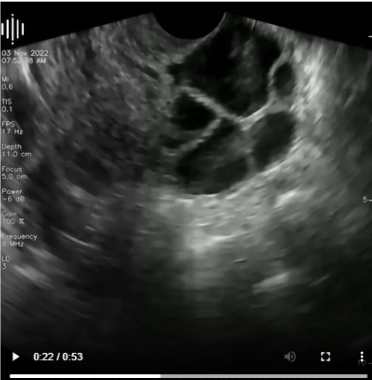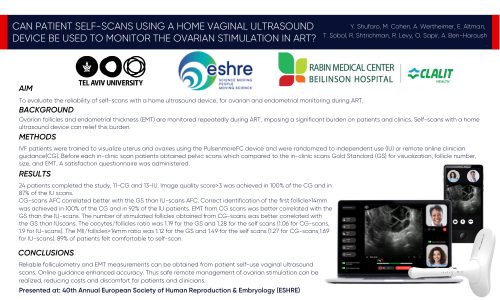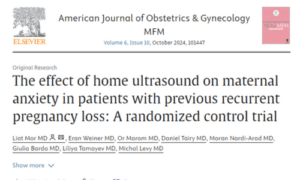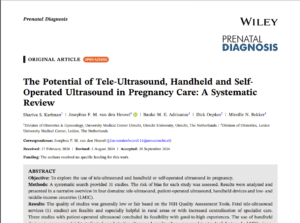Authors:
Y. Shufaro, M. Cohen, A. Wertheimer, E. Altman, T. Sobol, R. Shtrichman, R. Levy, O. Sapir, A. Ben-Haroush
Background:
Ovarian follicles and endometrial thickness (EMT) are monitored repeatedly during ART, imposing a significant burden on patients and clinics. Self-scans with a home ultrasound device can relief this burden.
Aim:
To evaluate the reliability of self-scans with a home ultrasound device, for ovarian and endometrial monitoring during ART.

Methods:
IVF patients were trained to visualize uterus and ovaries using the PulsenmoreFC device and were randomized to independent use (IU) or remote online clinician guidance(CG). Before each in-clinic scan patients obtained pelvic scans which compared to the in-clinic scans Gold Standard (GS) for visualization, follicle number, size, and EMT. A satisfaction questionnaire was administered.
Results:
24 patients completed the study, 11-CG and 13-IU. Image quality score>3 was achieved in 100% of the CG and in 87% of the IU scans.
CG-scans AFC correlated better with the GS than IU-scans AFC. Correct identification of the first follicle>14mm was achieved in 100% of the CG and in 92% of the IU patients. EMT from CG scans was better correlated with the GS than the IU-scans. The number of stimulated follicles obtained from CG-scans was better correlated with the GS than IUscans. The oocytes/follicles ratio was 1.19 for the GS and 1.28 for the self scans (1.06 for CG-scans, 1.9 for IU-scans). The MII/follicles>14mm ratio was 1.12 for the GS and 1.49 for the self scans (1.27 for CG-scans,1.69 for IU-scans). 89% of patients felt comfortable to self-scan.
Conclusion:
Reliable folliculometry and EMT measurements can be obtained from patient self-use vaginal ultrasound scans. Online guidance enhanced accuracy. Thus safe remote management of ovarian stimulation can be realized, reducing costs and discomfort for patients and clinicians.







